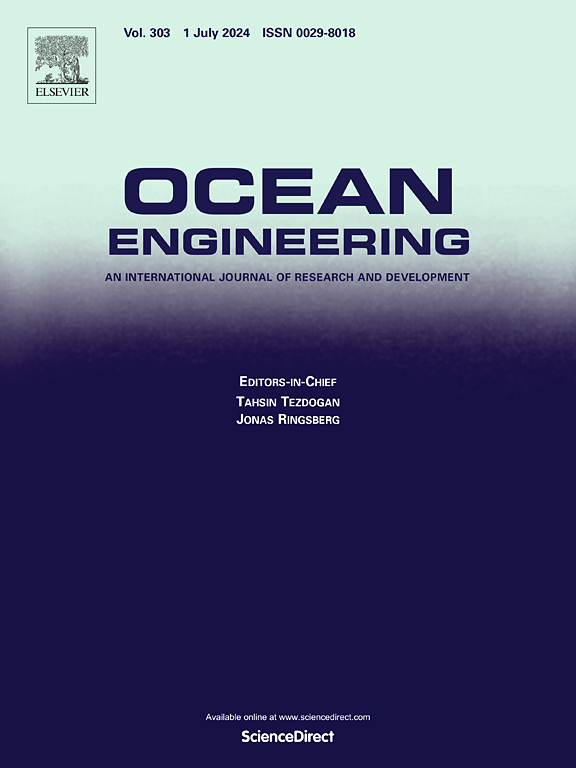Ship detection using GNSS Wave Buoy MGB-2
IF 4.6
2区 工程技术
Q1 ENGINEERING, CIVIL
引用次数: 0
Abstract
GNSS wave buoys, traditionally used for measuring hydrological parameters such as tides and waves, can also function as ship detection sensors by analyzing their displacement data. Compared to remote sensing techniques, GNSS buoys offer the advantages of continuous observation and high sampling rates. In this research, we propose a novel ship detection method utilizing our independently developed GNSS wave buoy, the ”Multi-antenna GNSS Wave Buoy Generation 2 (MGB-2)”. This study begins by modeling ship wakes and analyzing their impact on wave buoys. Simulation results indicate that wave buoys can detect wake signals within specific frequency bands. Then we introduce the method employing wavelet transform of vertical displacement and the creation of a background field to detect passing ships. Experiments conducted on the Haihe River in Tianjin demonstrated successful detection in all seven observed ship passages. Additionally, by analyzing the buoy’s horizontal displacement, the method enables the determination of ship movement direction based on the propagation characteristics of ship wakes. Finally, to assess the method’s performance in marine environments, we simulated random sea conditions using the JONSWAP wave spectrum combined with the cosine-squared directional spreading function. The results indicate that the proposed method can effectively detect ship wakes even in complex wave conditions, highlighting the potential of GNSS buoys for ship detection in marine environments.
求助全文
约1分钟内获得全文
求助全文
来源期刊

Ocean Engineering
工程技术-工程:大洋
CiteScore
7.30
自引率
34.00%
发文量
2379
审稿时长
8.1 months
期刊介绍:
Ocean Engineering provides a medium for the publication of original research and development work in the field of ocean engineering. Ocean Engineering seeks papers in the following topics.
 求助内容:
求助内容: 应助结果提醒方式:
应助结果提醒方式:


